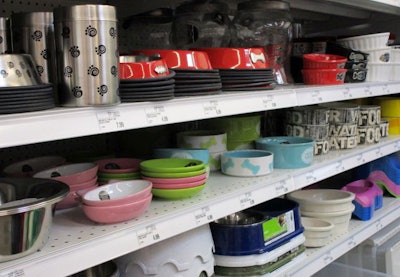
The last few weeks I’ve focused pretty extensively on the sudden bump to e-commerce due to the COVID-19 pandemic keeping people all over the world at home. But when all is said and done, brick-and-mortar is still a significant outlet for the pet food industry, and it’s important to take a look at what the physical spaces will need to continue to be successful channels for pet food products, both as the virus continues to affect every facet of the global economy and once the “new normal” is established.
First, the challenge: e-commerce growth is going to stick
“Based on history, we expect a significant portion of digital growth to stick and become permanent once the [COVID-19-related] restrictions are lifted,” said global consulting firm AlixPartners in a recent report, “Honey, I shrunk my margins: How to avoid financial risk from increasing online grocery shopping.” During the 2008–2009 downturn, many shoppers were driven to discounters and a large portion never fully returned to traditional grocers, said the report. “The current crisis is similarly forcing customers to try something new. Many will like it and will not snap back into past behaviors.”
What kind of changes might this mean for retailers?
“All other factors being equal, our analysis suggests that a permanent overall online penetration of between 7.5% and 20% would result in an individual retailer’s current operating income being reduced by approximately 0.75 to 2.75 points if the retailer is unable to charge the customer extra fee for the service,” said AlixPartners. “Pushing customers to click and-collect options can deliver significantly better operating income than a more delivery-heavy mix. This is the magnitude of the change grocers are going to have to deal with.”
Now, the solution: the industry must take care of its own
Unsurprisingly, as with most crises the solution is for all segments of the industry to band together and take care of their own to keep the brick-and-mortar channel healthy.
“As pet retailers are contemplating some big questions, such as how will current and prospective pet owners’ future shopping behavior reflect changes that were necessitated by quarantine restrictions, what will customers expect from their brick-and-mortar experiences in the future, and what can we do to communicate a commitment to safe and reliable operations, the entire pet care community … can be taking steps to help them get back on their feet as quickly as possible,” said Mike Bober, president and CEO of the Pet Industry Joint Advisory Council (PIJAC) during the “Pet care community virtual town hall 2nd edition” presented as a service of the Pet Industry Leadership Summit.
The event, which was co-sponsored by PIJAC, the American Pet Products Association (APPA), the Pet Industry Distributors Association (PIDA) and the World Pet Association (WPA), brought together multiple speakers to answer the question, “What can we all do today to help brick-and-mortar retailers recover tomorrow?” The answer? Communicate now and establish inroads that can be sustained both in the present and in the future.
From the retailer side, “We just want to show our customers that we’re taking every precaution possible to make sure that they’re safe, that our employees are safe and that our pets are safe,” said Elizabeth Kunzelman, director of public affairs for Petland Inc., during the town hall. Curbside delivery and online ordering are popular and convenient; Kunzelman said she expects to see these trends continue long after COVID-19. “We don’t see a lot of this going away,” she said. “There’s going to be social distancing in our vernacular for some time to come.”
Kevin Fink, CEO of pet products manufacturer Worldwise, said during the town hall that things are definitely challenging, but may not be as dire as they seem.
“Will we be down double digits [in the non-food pet category]?” he said. “Probably yeah, in totality we will be. But what we’ve seen is that as consumers have migrated through this change in the environment with many of their favorite stores being closed, the food/drug mass retailers have prospered. You’re seeing that they’ve done well because they’ve gotten such a bump in increased foot traffic and they have the advantage of being a one-stop shop.”
Overall, said Fink, things are just going to have to be done better as relates to consumers and local brick-and-mortar stores, whether it’s leveraging the benefits of being a smaller-sized retailer, doing pull promotions to draw in more consumers, or helping retailers actually lean in to e-tailing.
“I think that there are a lot of assets out there that manufacturers like us have where we can help individual retailers make progress on their electronic platforms,” said Fink. “And the reason this is important is, even if you’re not planning on being a [business-to-consumer] seller in a major way, the one thing I’ve heard amazing numbers in is BOPUS (buy online, pick up in store). Providing that electronic platform for people so they can buy not only the necessities but also the hard goods that roll with it is a really smart opportunity.”
The bottom line: band together
As the state of the world continues to morph and the current crisis stretches on, it is vital that the pet food industry gathers its resources to ensure that everyone is left standing when the storm passes. The more communication is solidified, the better off everyone will be, from supplier to manufacturer to distributor to retailer.
Briefly: Keep up with the latest pet-related COVID-19 coverage
- View our continuing coverage of the coronavirus/COVID-19 pandemic.
- Take the Petfood Industry COVID-19 survey.


















